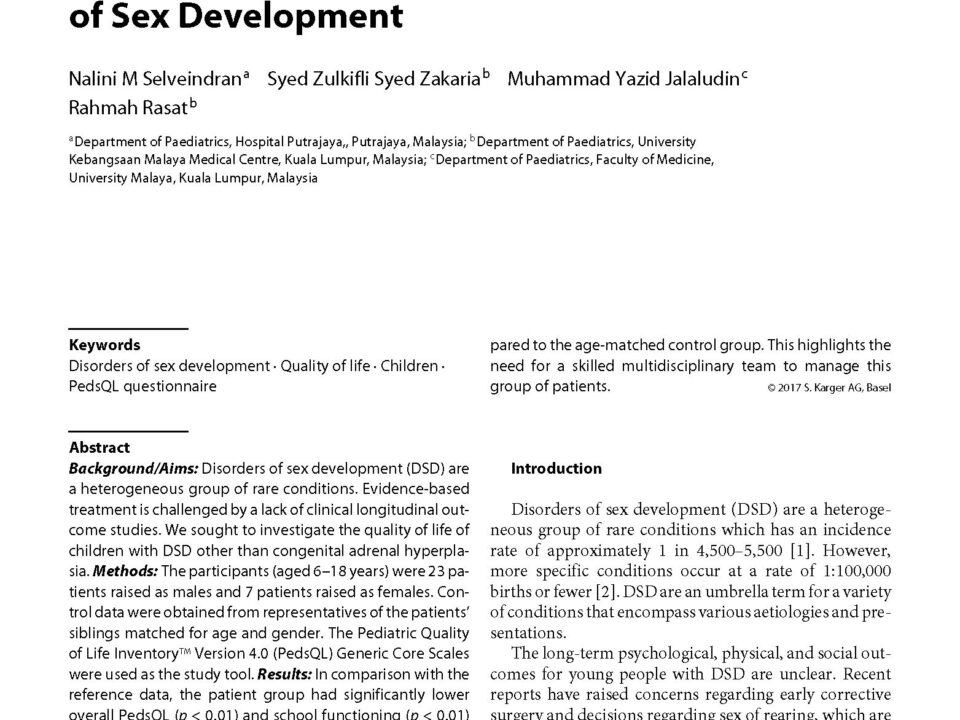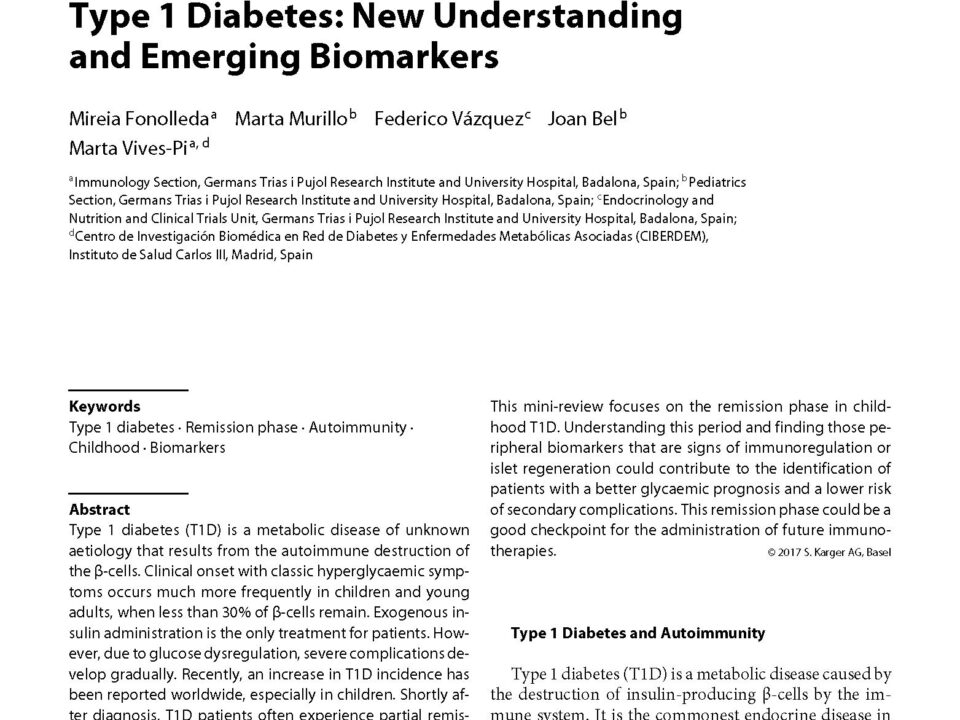Highlighted
- Filter by
- Categories
- Tags
- Authors
- Show all
December 13, 2022
Background/Aims: Disorders of sex development (DSD) are a heterogeneous group of rare conditions. Evidence-based treatment is challenged by a lack of clinical longitudinal outcome studies. We sought to investigate the quality of life of children with DSD other than congenital adrenal hyperplasia. Methods: The participants (aged 6–18 years) were 23 patients raised as males and 7 patients raised as females. Control data were obtained from representatives of the patients’ siblings matched for age and gender. The Pediatric Quality of Life InventoryTM Version 4.0 (PedsQL) Generic Core Scales were used as the study tool. Results: In comparison with the reference data, the patient group had significantly lower overall PedsQL (p < 0.01) and school functioning (p < 0.01) scores. Also, the total PedsQL score was significantly lower in patients with DSD who were of female social sex as compared to the controls who were females. Family income, surgical procedures, degree of virilization, and mode of puberty did not influence the PedsQL scores. Conclusion: This study revealed a poorer quality of life for patients with DSD as compared to the age-matched control group. This highlights the need for a skilled multidisciplinary team to manage this group of patients.
December 13, 2022
Type 1 diabetes (T1D) is a metabolic disease of unknown aetiology that results from the autoimmune destruction of the β-cells. Clinical onset with classic hyperglycaemic symptoms occurs much more frequently in children and young adults, when less than 30% of β-cells remain. Exogenous insulin administration is the only treatment for patients. However, due to glucose dysregulation, severe complications develop gradually. Recently, an increase in T1D incidence has been reported worldwide, especially in children. Shortly after diagnosis, T1D patients often experience partial remission called “honeymoon phase,” which lasts a few months, with minor requirements of exogenous insulin. In this stage, the remaining β-cells are still able to produce enough insulin to reduce the administration of exogenous insulin. A recovery of immunological tolerance to β-cell autoantigens could explain the regeneration attempt in this remission phase. This mini-review focuses on the remission phase in childhood T1D. Understanding this period and finding those peripheral biomarkers that are signs of immunoregulation or islet regeneration could contribute to the identification of patients with a better glycaemic prognosis and a lower risk of secondary complications. This remission phase could be a good checkpoint for the administration of future immunotherapies.


